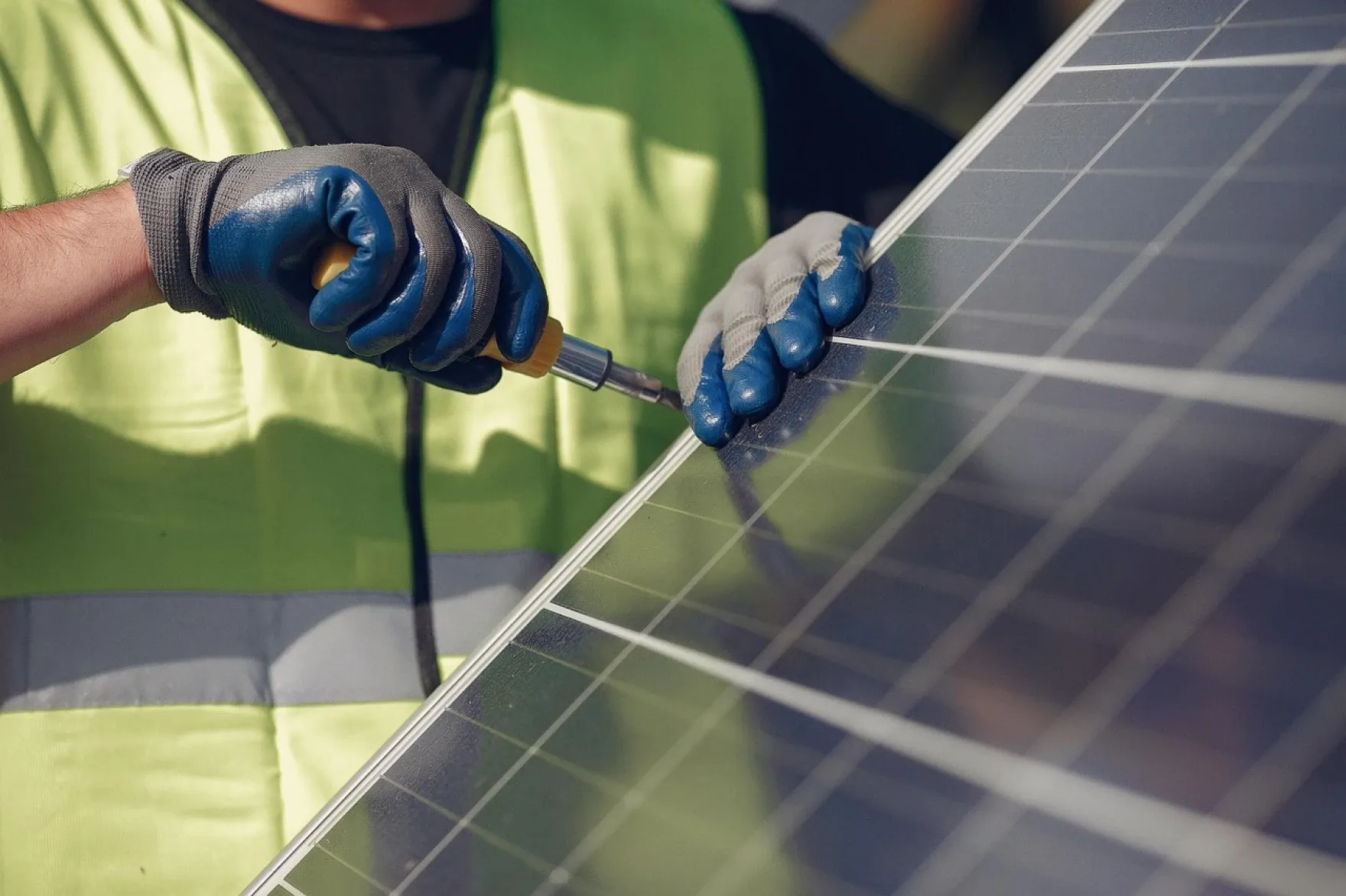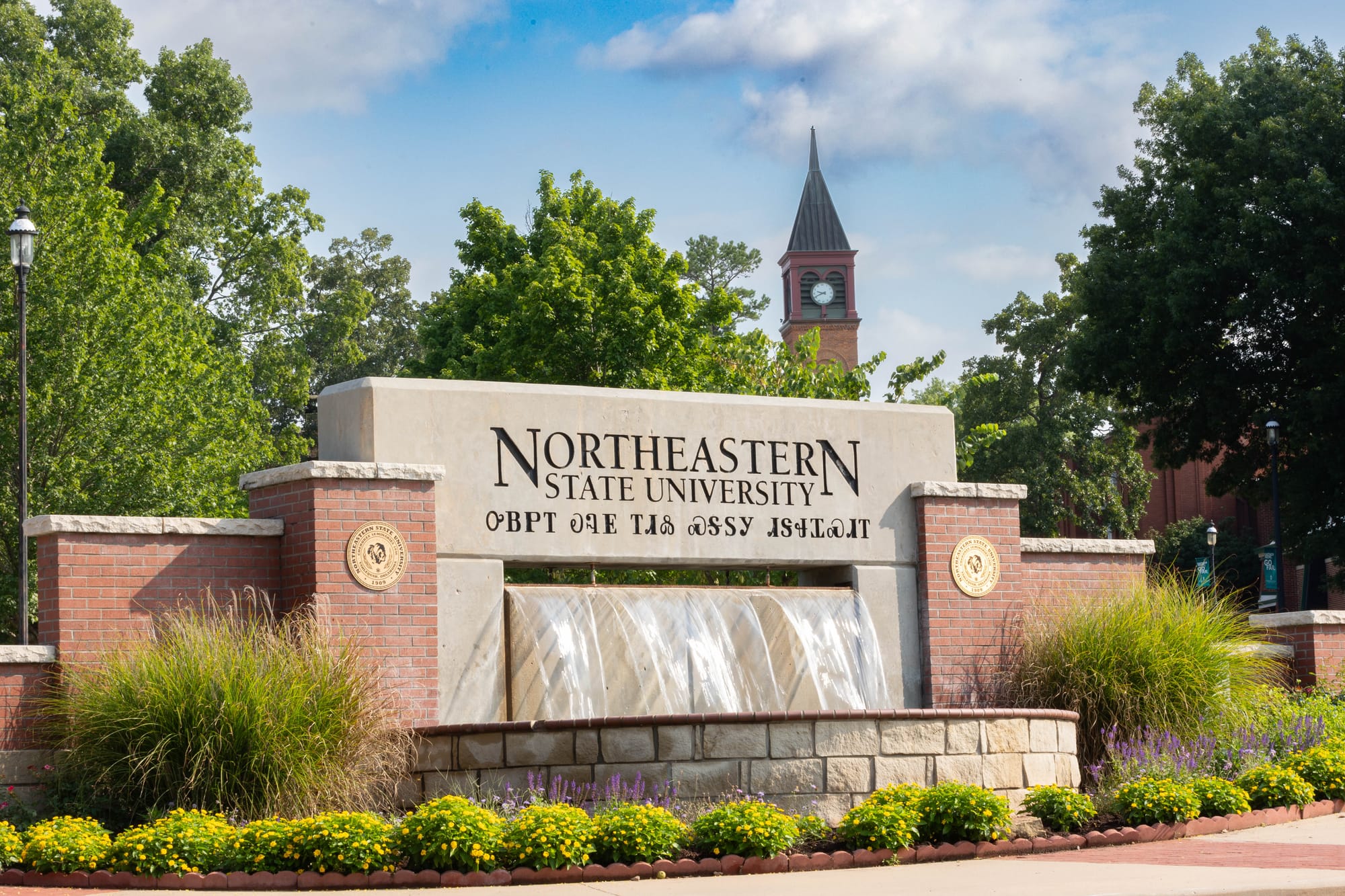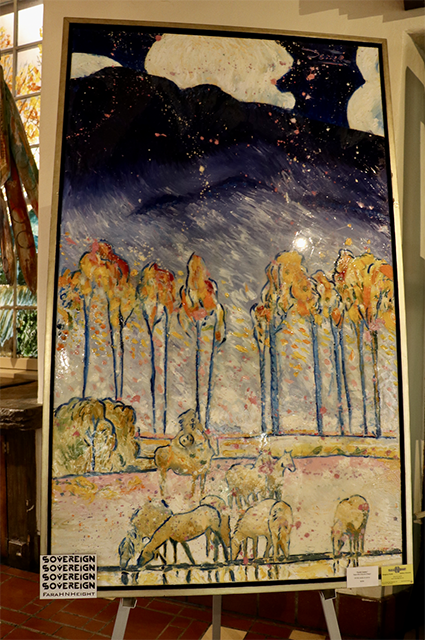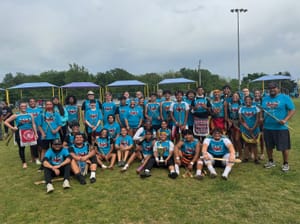

As federal solar tax credits end, here's how one Oklahoma tribal nation used them

Federal incentives to lessen the financial burden of solar panel installations are ending earlier than originally planned after the July 4 passage of the tax and spending law.
By Chloe Bennett-Steele, KOSU
Although the center will still be plugged into the electric grid and receive a utility bill, officials with the project say the charge should be significantly lower than without solar. The installation is among the first developed by Saku, a joint venture between the Caddo Nation and solar company EightTwenty.
" Saku is the Caddo word for sun," Zackeree Kelin, vice chairman of the Caddo Nation Economic Development Authority, said. "And the goal of it was to power tribes' future with solar."
Kelin said by reducing energy costs with solar power, the Caddo Nation can allocate more dollars to other operations. The money is intended to bolster tribal citizen services.
Maximizing solar incentives
Another reason for the collaboration with EightTwenty, Kelin said, is rooted in federal tax incentives, some of which were expanded in recent years.
" We formed a relationship with them primarily because of, in part, the tax credits in Indian country were one of the most underutilized tax credits there are," he said.
Under the 2022 Inflation Reduction Act, many solar projects can receive a 30% tax credit to lessen the total cost of installation. The Caddo Nation was able to stack the incentives with smaller credits for tribal lands and products made in the U.S. The project got up-front funding from EightTwenty's sister company, Brightwell, which offsets project costs with the federal incentives and investor matching.
" Whether it's economic development or the provision of tribal services, reducing the spend on energy is something that Indian Country is very much in need of, is being very responsive to, and trying to control more of their energy resources is a big deal in Indian Country," Kelin said.
Now, the federal credits intended to boost American solar power are expiring years earlier than originally planned. The One Big Beautiful Bill, which became law earlier this summer, sunsets federal incentives to install solar and wind projects.
Homeowners have until midnight on Dec. 31 to pay, at least partially, for residential solar projects to get the 30% credit. Commercial installations have access to the incentive through 2027.
The U.S. Environmental Protection Agency has also ended a solar program for disadvantaged communities. Solar For All was set to allocate $7 billion to develop residential solar in states including Oklahoma. The Caddo Nation was a subrecipient of one of the grants, Kelin said.
The actions are part of a string of restrictions on renewables in the U.S. and executive orders from President Donald Trump aimed at expanding the oil and gas industry. Oklahoma lawmakers, including Republican U.S. Senators James Lankford and Markwayne Mullin, have supported Trump's energy efforts.
What's behind the federal withdrawal from renewable energy?
The U.S. has a solar tax credit history dating back to the late 1970s, though the current version of the incentive has been around since the 2000s. The most recent solar credit expansion was part of a broad policy package designed to lower greenhouse gas emissions and combat climate change.
Reshuffling federal energy policy isn't unique to this administration. Cory Baitz, vice president of design for EightTwenty, said uncertainty about tax credits is embedded in the solar business.
" For the folks that have been in the industry for a long time, this is sort of the norm, and it's all about just riding the waves and seeing what comes next," he said.
Large-scale solar is touted as the cheapest form of energy generation in some financial reports. It also accounts for half of the nation's projected new electric generating capacity, data from the U.S. Energy Information Administration show.
But misinformation surrounding renewable energy persists, delaying or halting projects in some communities. Part of the distrust could be due to a misunderstanding of the electric grid, said Kylah McNabb, executive director for the Oklahoma Renewable Energy Council and owner of consulting firm Vesta Strategic Solutions.
"Folks that I've worked with across the nation, past and currently, have found it very interesting that we're finding ourselves in the same position we were about 15 years ago, with a need for basic education on where electrons come from," she said.
All-of-the-above energy strategy
The diversification of energy is needed to meet electricity demands, McNabb said.
"The system's larger than one particular set," she said. "And no energy source is infallible, as we saw with winter storm Uri. I think that was the biggest indicator, too, that I think we all realize that we need a variety of different sources and to not put your eggs all in one basket."
In Hinton, electric generation will be on display around the Caddo Nation's child care center. Swirling wind turbines on the horizon behind the building and Caddo County's oil and gas wells contribute to the state's energy profile.
Baitz said the diversity of energy aligns with the use of the building, and solar might become a fixture in the children's lives.
" We're very excited that we could do this for a child care center," he said. "I mean, you think about not only the benefit financially that the center would see operationally, but the exposure of solar to the kids that are going to come here, and it's transformative in the way where those kids, when they see it on an everyday basis, solar becomes normative."
At the time of publication, construction on the solar panels was set to begin in mid-September, and the childcare center was scheduled to open in January.

Northeastern State University celebrates five-semester streak of enrollment growth

Graduate, international and concurrent enrollment drive momentum as retention hits new highs
TAHLEQUAH, Okla. — For the fifth consecutive semester, Northeastern State University is growing—and so is the confidence students and families place in higher education. This fall, NSU’s total enrollment rose 1.5 percent, marking the university’s second straight year of overall growth and underscoring the trust students have in NSU to deliver on their investment by committing to their success.
The momentum is evident across several key areas. Enrollment in the Graduate College climbed 2.7 percent, international student enrollment surged by 86.2 percent, and concurrent enrollment increased 5.1 percent. NSU also recorded a recent institutional high in student retention at 69.8 percent. Together, these advances helped drive a 2 percent rise in credit hour production—a critical measure of both academic persistence and economic impact.
NSU President Rodney Hanley said the university’s consistent enrollment gains affirm the institution’s mission and its role in shaping Oklahoma’s future.
“At Northeastern State University, we believe in the transformative power of education. These enrollment gains show that students and families continue to trust NSU to deliver a promising future by investing in their success. Every student who chooses NSU is preparing to strengthen Oklahoma’s workforce and future economy, and we are proud to be part of that journey.”
University leaders point to strong graduate offerings, expanding concurrent enrollment partnerships and a sharpened focus on student retention as key drivers of growth. Together, these initiatives reinforce NSU’s role as both a university of choice for students and a vital partner in powering Oklahoma’s workforce and communities.
For more information about NSU’s academic programs and admissions, visit Go2NSU.com.
Justice for Hickory ground gains support at Santa Fe Indian Market

Mvskoke artists also have a strong showing at annual event
by Shayln Proctor, Mvskoke Media
SANTA FE, NM – The Southwestern Association for Indian Arts held the 103rd annual Santa Fe Indian Market from Aug. 16-17. SFIM is one of the largest markets for American Indian Art, and brought over 1,000 Indigenous Artists from different Tribal Nations across the U.S. and Canada to sell and showcase their work. This year the Muscogee (Creek) Nation, for the first time, was a title co-sponsor for SFIM.
According to the SWAIA, “Their sponsorship is a statement of solidarity. Together we affirm the importance of sovereignty, cultural authenticity and the essential role Native artists play in carrying our traditions forward. With this partnership, we celebrate not only the beauty of Native art-but the enduring strength of Native Nations.”
Many Mvskoke artists attended the market, including: Randy Kemp (Mvskoke), George Alexander (Mvskoke), Jesse Robbins (Mvskoke), Kenneth Johnson Studio (Mvskoke/Seminole), Faith Harjo Jones (Pawnee/Choctaw/Mvskoke/Cheyenne).
Mvskoke artist Carly Treece of Tvlse Studios curated the exhibit, “Keepers of the Land,” a collaboration with Sovereign Santa Fe during the SFIM. The exhibit featured contemporary Native American artists from Oklahoma.
MCN Second Chief Del Beaver gave opening remarks and prayer on Aug. 16 and Mvskoke Artist Randy Kemp did an opening flute performance.
“We are so happy to be a sponsor of SWAIA, but it’s such a good thing to see everybody here this morning because you’re not only investing in art, you are investing in somebody’s livelihood, you are investing in somebody’s God-given talent,” Beaver said during the opening remarks. “This is just a way to help perpetuate the arts and it’s more than just what’s on canvas, more than just a piece of pottery, it’s somebody’s livelihood, it’s a God giving talent, it’s what has been passed down from generation to generation.”
Sacred Sites and Oce Vpofv
On Aug 15, SWAIA hosted a Sacred Sites panel featuring Justice for Hickory Ground at the Museum of Indian Arts & Culture. The event reached full capacity and had an overflow room for viewers to watch the discussion live. Oce Vpofv (Hickory Ground) member Robin “Chub” Soweka gave a traditional Mvskoke welcoming.
The speakers on the panel included Ceremonial Ground Oce Vpofv (Hickory Ground) Mekko George Thompson (Mvskoke), MCN Secretary of Cultural and Humanities RaeLynn Butler (Mvskoke), “Rez Dogs” and “This May Be the Last Time” filmmaker Sterlin Harjo (Seminole), three-time U.S. Poet Laureate Joy Harjo (Mvskoke), artist Kenneth Johnson (Mvskoke/Seminole), and counsel for MCN Mary Kathryn Nagle (Cherokee). The panel was moderated by Supervisory Special Agent/Division Chief BIA-OJS Cultural Resources Division in NM Franklin “Frank” Chavez II.
When choosing the speakers the MCN Department of Culture and Humanities worked with Hickory Ground and identified artists. “We definitely wanted to have Joy Harjo, because she’s from Hickory Ground, but I automatically thought about Sterlin and Kenneth because of their connection and support,” Butler said. “We decided the rest of the panelists to have Mary Katherin Nagle, the attorney. In case there were some kind of legal questions that came up but definitely wanted to have Mekko Thompson as the main voice for Hickory Ground.”
According to Butler, the panel has received great feedback from museum and collections colleagues in other parts of Southeast. Some have shared their take-aways, including how informative the panel was.
Journey for Justice also had a booth on August 16 and 17. Informative materials on Hickory Ground and a special limited run of 200 t-shirts featuring a design by Johnson were available to promote the cause.
Over 1,100 signed postcards addressed to Auburn University were signed by visitors at the booth during the two days. The postcards ask the university to return ancestors currently held in the collections. Butler shared that she felt the event was successful and that it received an overall encouraging response and support from the community.
Throughout Hickory Ground events, including those in the Homelands, Butler sees more outreach for non-native people who don’t have knowledge about the Native American Graves Protection and Repatriation Act (NAGPRA) or sacred land issues. This was different in Santa Fe.
“I think what was really eye opening in Santa Fe was that people already knew about NAGPRA and there were so many Natives who came by the booth and who have a very similar history and story of sacred sites being developed where they had to fight for their ancestors to get them back too. So people were very sympathetic to our situation and cause and wanted to help in any way that they could,” Butler said.
The SFIM experience, from the panel to the booth, was heartening for Butler and the department. “It’s great to see Southeastern tribes represented. Overall, it was very encouraging and motivating to see the level of support and interest that we got from working in the booth that weekend,” Butler said.
“It was a very great experience and I am thankful that Hickory Ground and the Muscogee Creek Nation were able to attend and really help promote sacred lands protection.”
Keeping the Momentum
The Department and Hickory Ground have other ideas for booths for the Journey for Justice. Butler is looking to have a booth set up in Norman during the time Auburn University is playing football against the University of Oklahoma this fall.
“We’re exploring other options of how to keep this going, and to keep the support coming along and where else would a panel like that be successful and just thinking more about that,” Butler said.
For more information on Oce Vpofv and the Journey for Justice, visit https://www.muscogeenation.com/justice-for-hickory-ground.
To watch the SWAIA SFIM Sacred Sites panel, visit the Justice for Hickory Ground Facebook page.









